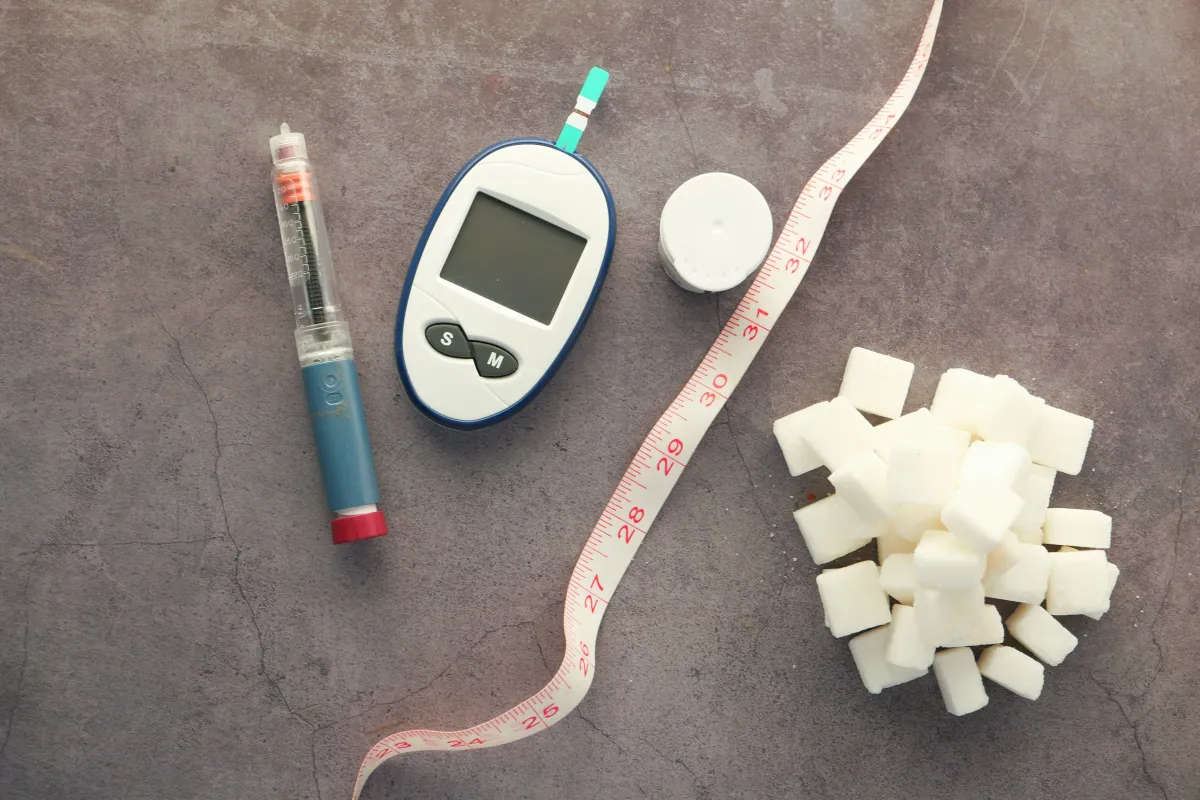
BLOGS

Treatments and Management For Your Diabetes
Diabetes is an essential element that develops in the rich fabric of health, and it has an impact on the lives of millions of people all over the world. Diagnosing diabetes can be challenging, but recent advancements in medical research and lifestyle modifications have paved the way for effective treatment and management of the condition. The purpose of this article is to provide individuals with the knowledge and tools necessary to travel the route to wellness by examining diabetic medical treatments and management options.
1. Developing a Strategy With Your Medical Provider
You will almost certainly have a multiplicity of inquiries upon receiving a diabetes diagnosis. Inquiries about how to treat diabetes, lifestyle adjustments, and preventive measures against severe medical complications are not uncommon.
A diabetes specialist in Arizona and a diabetic care team can collaborate with you to develop an individualized plan that optimizes your health and meets your specific requirements. Your healthcare provider will initially consult with you regarding dietary modifications that can aid in blood sugar regulation and promote weight loss if required.
The subsequent course of action in diabetes management entails formulating a treatment strategy that incorporates your existing medication regimen and emphasizes the importance of daily blood sugar monitoring. During this appointment, the diabetes care team will detail the specifics, including the frequency of blood sugar monitoring and the administration of insulin as required.
For further details, please get in touch with Gilbert Integrative Medical Center.
2. Exercise
Before initiating any exercise routine, it's crucial to seek advice. For adults, the recommended duration of aerobic exercise per week is 150 minutes, performed at a moderate intensity. As a result, seeking expert guidance from Gilbert Integrative Medical Center may be a wise decision.
Examples of activities that raise the heart rate include walking, riding, and swimming. Other examples are walking and cycling. Attempt to complete thirty minutes of aerobic activity that is moderate on the majority of the days of the week. Additionally, the majority of people should make it a point to focus on their strengths at least twice or three times every week.
1. In the event that you have been inactive for a considerable amount of time, the initial step that a physician can conduct is to examine your overall health. The correct recommendation of an exercise program that includes both aerobic and strength training will be possible as a result of this.
2. Maintain a consistent regimen of physical activity. Consult a medical professional if you wish to determine when your body responds most positively to training. Consequently, your exercise regimen will align with the periods during which you ingest sustenance and administer medications.
3. You should get a sense of the numbers. Prior to beginning an exercise program, you should discuss the matter with your physician in order to ascertain the ideal levels of blood sugar concentration.
4. Even without insulin or other diabetes medicine, it may not be essential to check blood sugar levels before or after an exercise.
5. Whether you are taking insulin or another diabetic medication is inconsequential; testing remains imperative. Observe your blood glucose levels prior to, during, and subsequent to engaging in any form of physical activity. Insulin for diabetes often leads to a decrease in plasma glucose levels.
Furthermore, physical activity can have a similar effect, lasting for up to twenty-four hours. Engaging in new activities or starting a more strenuous exercise routine increases the likelihood of experiencing hypoglycemia. Be conscious of the signs and symptoms of hypoglycemia. Shaking, weakness, fatigue, hunger, dizziness, impatience, panic, or disorientation are some of the feelings that go into this group. Other experiences that fall into this area include disorientation and panic.
Read also: Potential of Infusion Therapy for Diabetes Management
3. Food
Eating Healthy is essential for all individuals. Having diabetes, however, necessitates an understanding of how various nutrients impact blood sugar levels. Not solely the variety of sustenance one consumes. Additionally, it is the quantity and variety of foods incorporated into meals and snacks. Eating healthy is considered the best cure for diabetes.
What Next:
• Understand how to organize balanced meals. A healthy eating strategy incorporates both the selection and portion sizes of foods. In meal planning, carbohydrate counting and the plate method are two prevalent approaches. Consult with your physician or a registered dietitian regarding the suitability of either meal planning method.
• Be familiar with the plate method. This menu planning method is less complicated than carb counting. The plate method facilitates portion control and the consumption of a balanced variety of foods.
• Utilize a 9-inch dish. Plate nonstarchy vegetables for half of the serving. Lettuce, cucumbers, broccoli, tomatoes, and green legumes are some examples. Equally, divide the remaining half of the plate into two smaller portions. The concept of quarters is a term you might come across. Allocate one-fourth of the plate to a lean protein source. Examples include fish, legumes, eggs, lean meat, and poultry. Distribute nutritious carbohydrates, including fruits and whole cereals, in the remaining quarter.
• Consider portion proportions carefully. Determine the appropriate portion measurement for each food type. Commonplace objects may aid in memory retention. To illustrate, one portion of poultry or flesh is roughly the dimensions of a deck of playing cards. Cheese is approximately the size of six grapes per serving. Additionally, cooked pasta or rice is approximately the measure of a fistful. Additionally, one may employ measuring containers or a scale to verify the accuracy of portion sizes.
Read also: The Role of Sugar in Diabetes: Debunking Common Myths
The Bottom Line
Numerous choices exist for the management of diabetes. Diet and exercise regimen adjustments are often the starting point. To alleviate diabetes symptoms, quitting smoking is a must.
Medication, whether oral or injectable, is an option for managing diabetes when behavioral modifications are insufficient. Some patients may require insulin shots once a day. To determine the efficacy of insulin treatment and the effects of food and exercise on blood sugar levels, it is important to check blood glucose levels often in insulin users.
Regular reviews of the strategy with your healthcare provider are essential. When your blood sugar levels are out of control, you are pregnant or trying to conceive; you have a new condition, its symptoms, or changes to your lifestyle—these are all reasons to arrange a special evaluation. Consequently, I hope this article has answered your question about how diabetes is managed.
Please visit Gilbert Integrative Medical Center for more details.
Welcome to Gilbert Integrative Medical Center, your trusted source for comprehensive diabetes care in Arizona. Request an appointment online or by phone today.
Contact Us
Email: support@gilbertimc.com
Address:
2451 E Baseline Rd #100
Gilbert, AZ 85234
Phone Number:
Stay Connected:
Visit Us
Contact Us
Email: staff@wellness1stimc.com
Address:
2451 E Baseline Rd #100
Gilbert, AZ 85234
Phone Number:
Copyright 2024 . All rights reserved



